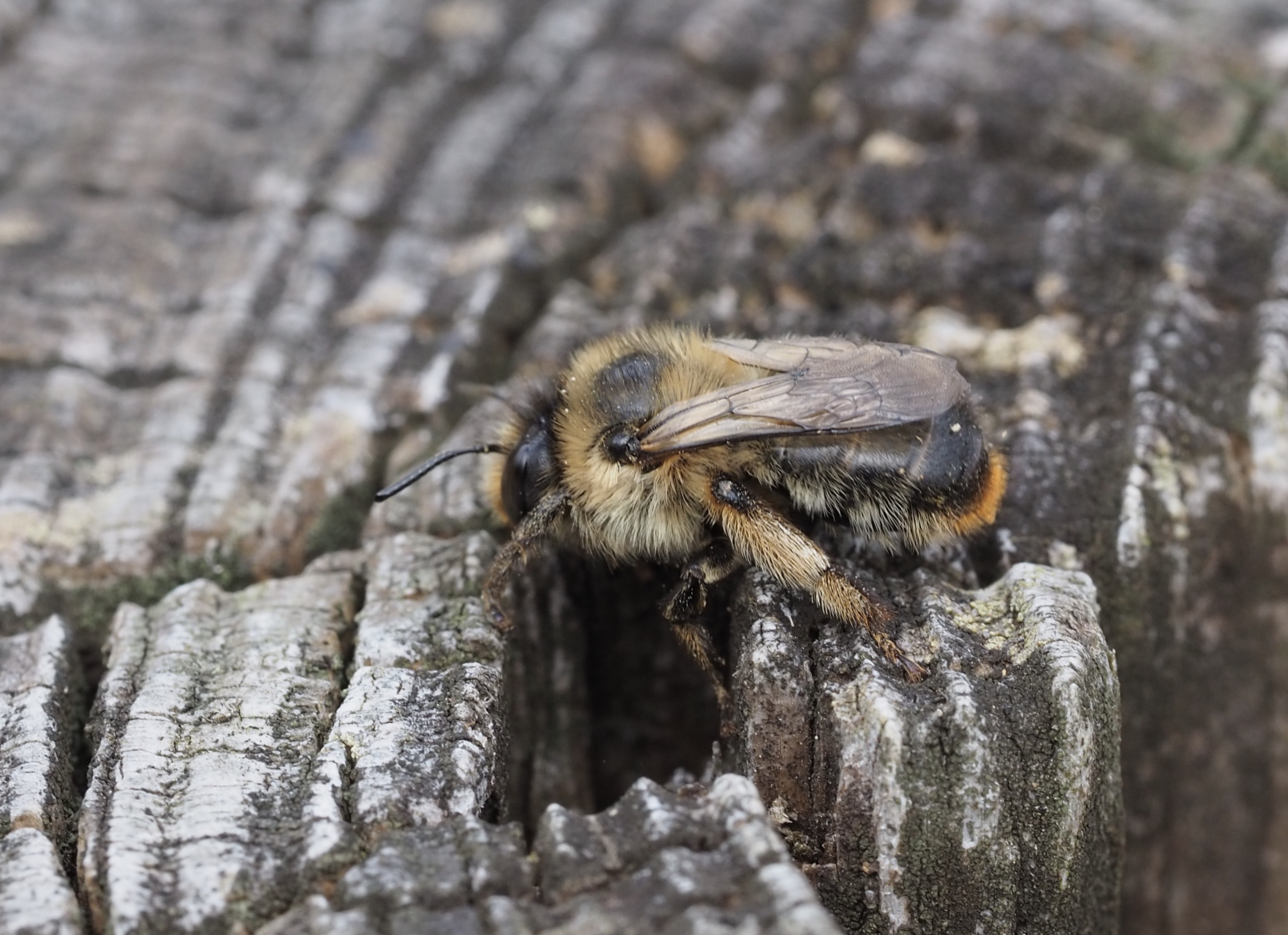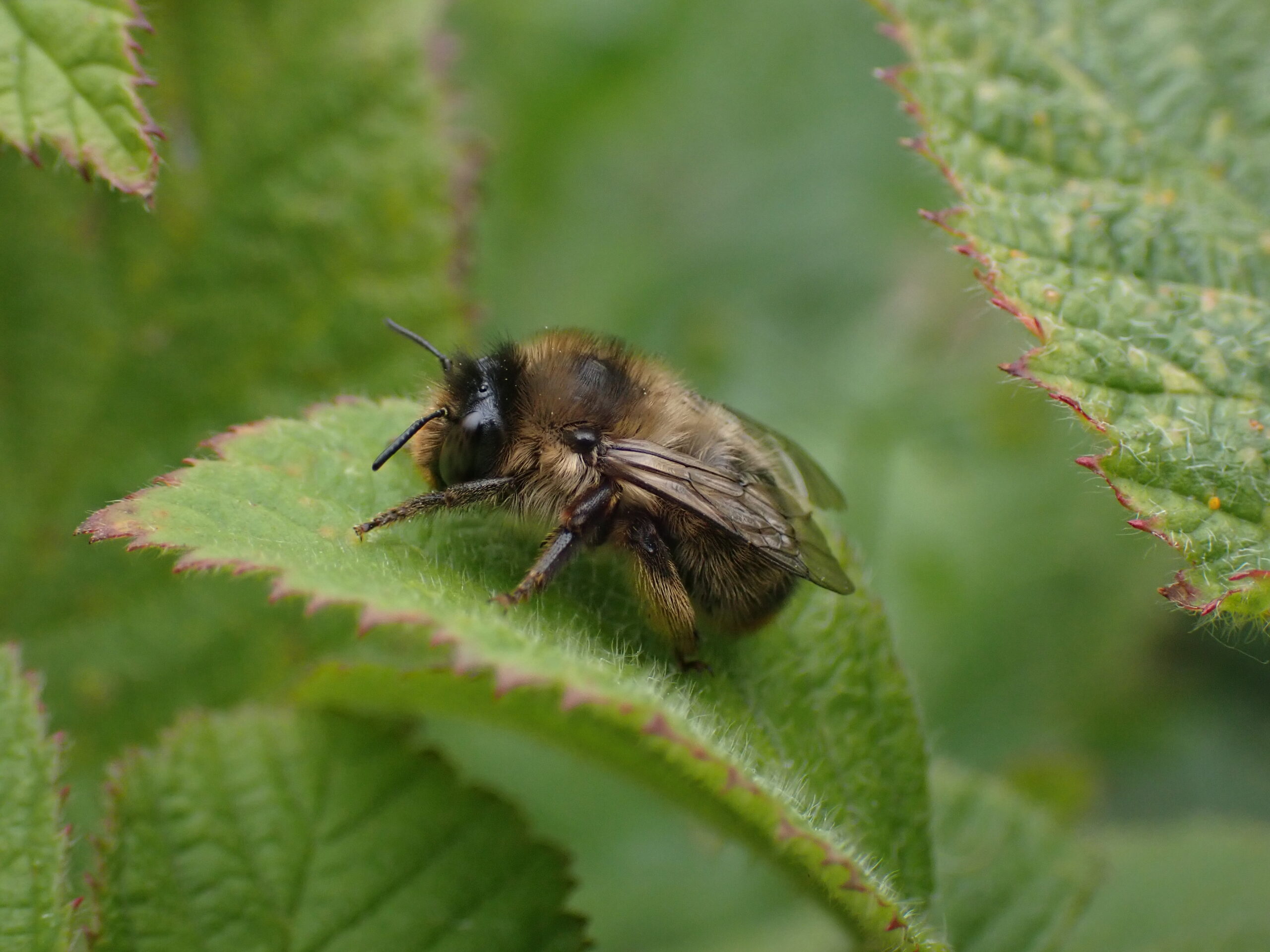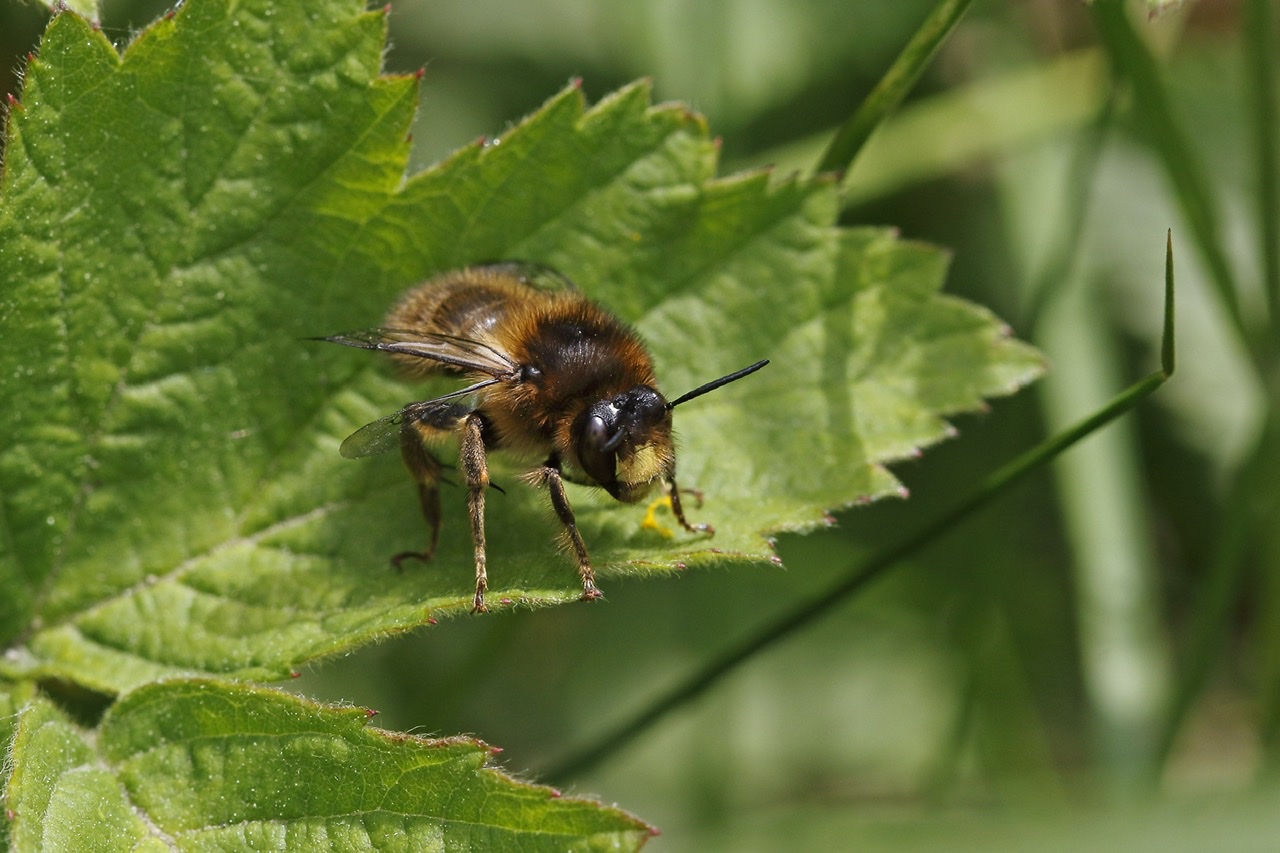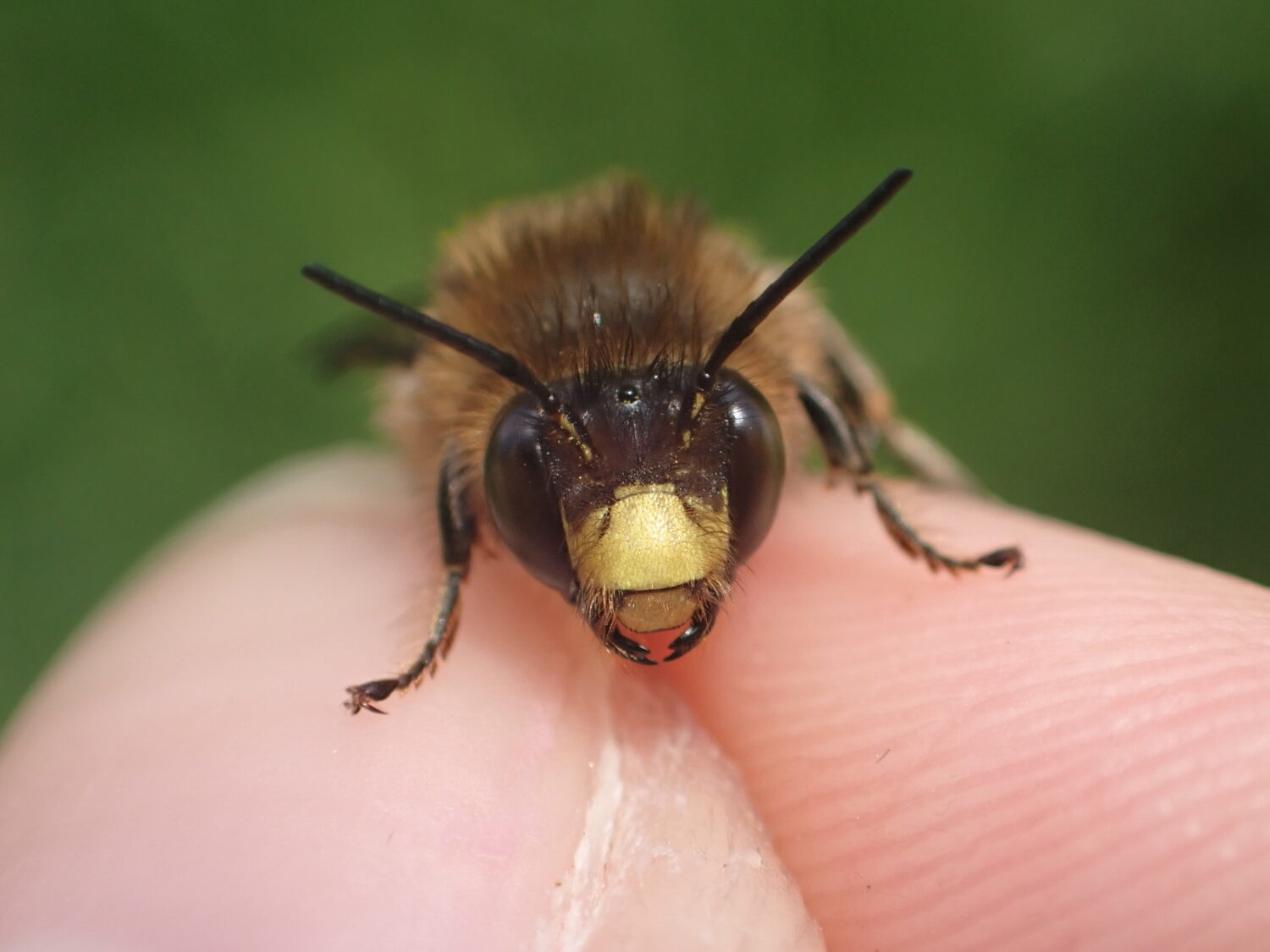Anthophora furcata
Fast facts
- Common name(s)
- Fork-tailed Flower Bee
- Scientific name
- Anthophora furcata
- Bee group
- A species of solitary bee belonging to the ‘Flower Bee’ group
- When to see it
- Late May – August
Description
The Fork-tailed Flower Bee is a zippy and noisy solitary bee that is often mistaken for a small bumblebee. Fond of plants from the Lamiaceae family, it can be found in habitats with plentiful Woundworts, Dead-nettles, Salvias and Lamb’s-ear. Unusual for this group in Britain, females nest in dead wood.
Identification
The Fork-tailed Flower Bee is a furry and large solitary bee with a high-pitched buzz and darting flight. Both females and males are brown-haired and, in fresh individuals, a darker band of hair is present between the wing bases. There are key features to distinguish between females and males.
Females
Females are all brown with a small orange-red tip to their tail. Females do not have a yellow face like that of the males. Their back legs are also densely furred but can be covered in pollen.
Remember
Fork-tailed Flower Bees have a high-pitched buzz and a darting, hovering flight, unlike bumblebees.
Males
Males also have brown fur but do not have a red tip to their tail. Males have a distinctive yellow ‘mask’ on their face with sparse facial hair. Males are distinctive in their behaviour, spending most of their time patrolling areas in search for a mate with pit-stops at flowers for nectar.
Explore more images of the Fork-tailed Flower Bee here.
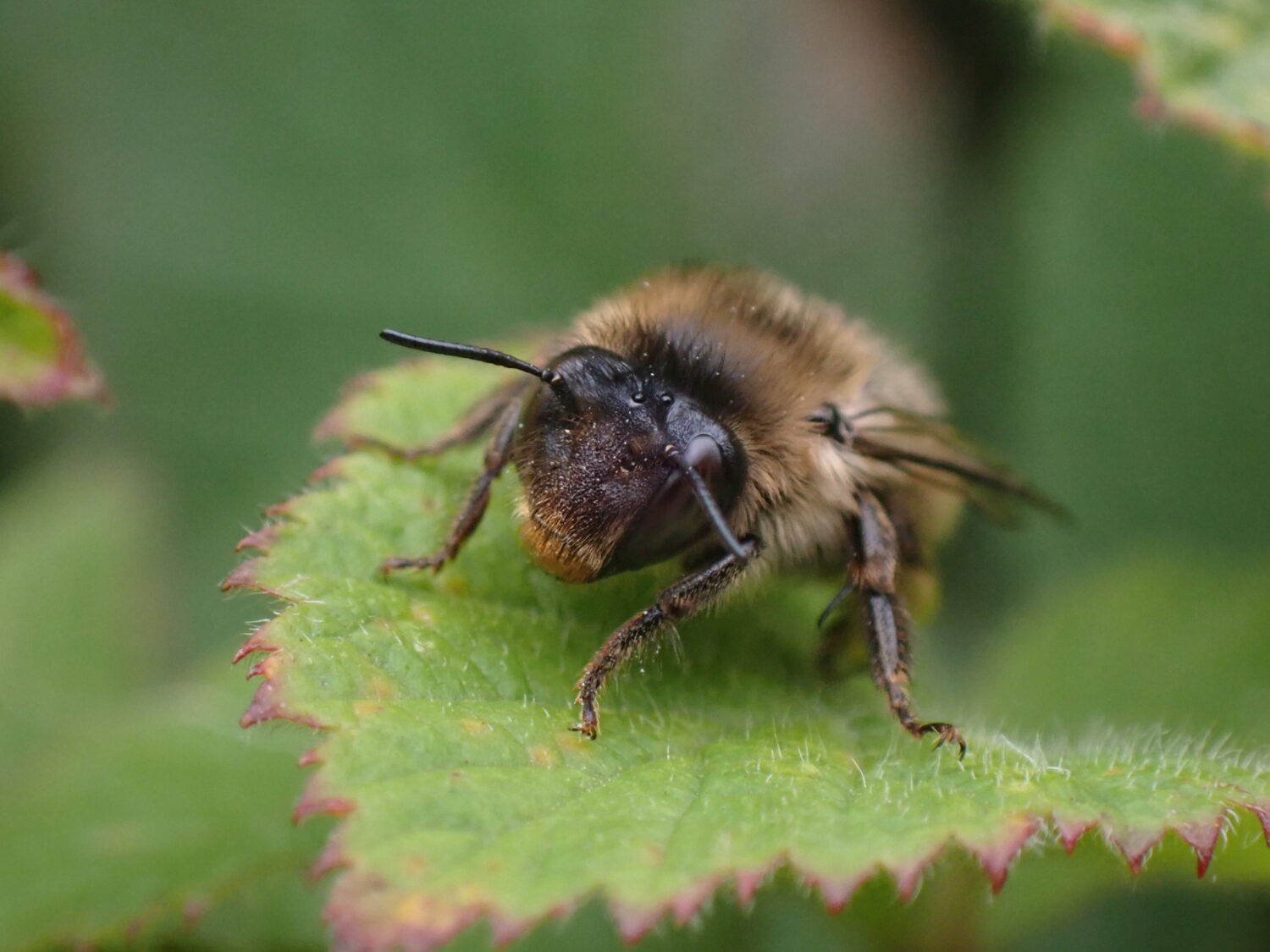
Spotted this bee?
Share your sighting of the Fork-tailed Flower Bee and other North East Bee Hunt target species to contribute to the conservation and study of our region’s bees.
Similar species
Hairy-footed Flower Bee
There is one other Flower Bee species present in the North East, known as the Hairy-footed Flower Bee (Anthophora plumipes). In the region, this species is only known from North Northumberland and is out very early from March onwards. Females are all-black with orange hind legs while males are light brown with long, feathery hairs on their middle legs.
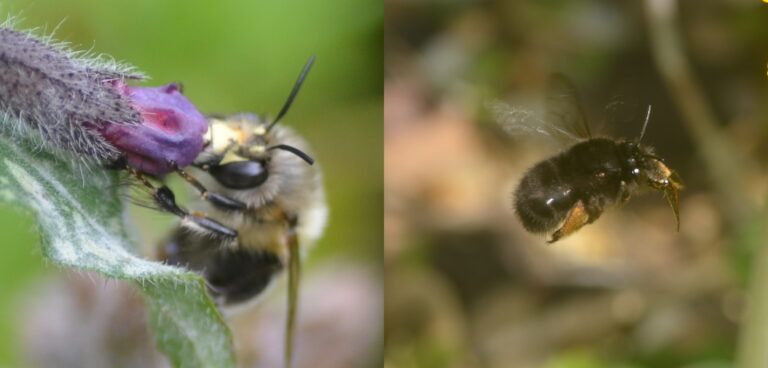
Common Carder
The Fork-tailed Flower Bee is easily mistaken for a bumblebee, particularly the gingery Common Carder (Bombus pascuorum). Attuning your eyes and ears to the zippy flight behaviour and shrill sound of Flower Bees is a good way to distinguish between bumblebees and Flower Bees. Also, look out for the distinctive yellow face of male Fork-tailed Flower Bees. In addition, females and males have dense brown hair on their hind legs unlike that of Common Carders.
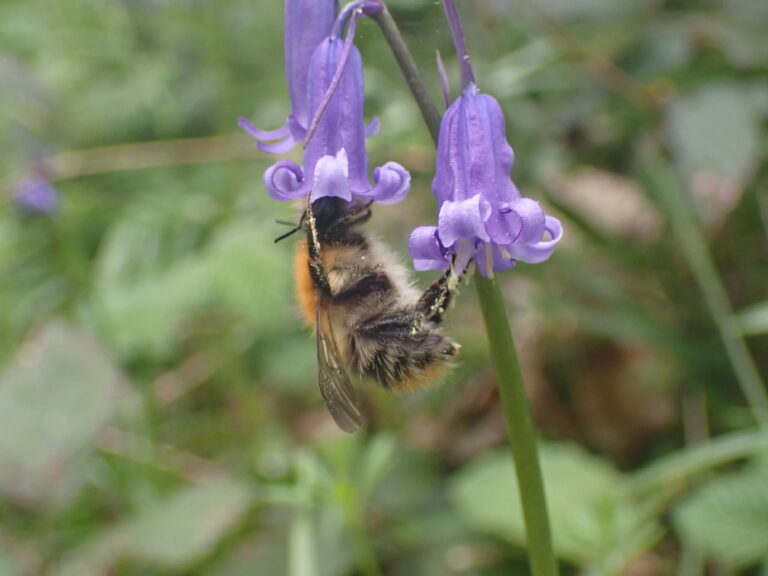
Ecology
Fork-tailed Flower Bees are bumblebee-like in appearance but their flight behaviour gives them away. Their hovering and darting flight contrasts with the bumbling nature of bumblebees. With their shrill-like buzz, you will often hear them before you see them. Fork-tailed Flower Bees are summer-flying solitary bees on the wing from May onwards.
Females nest in dead wood such as rotting tree stumps and fence posts and are thought to use compacted wood dust to line their nests. A species of solitary bee, females construct and provision their own nests without the help of workers. Each nest contains a series of sealed nest cells, each containing an egg provisioned with pollen and nectar.
Females collect pollen on their hind legs and are believed to collect pollen exclusively from plants of the Lamiaceae family. Forage favourites include Woundworts, Dead-nettles, garden Lamb’s-ear and Salvias. A long-tongued bee, females and males will typically source nectar from plants with deep, tubular flowers.
Further information on the Fork-tailed Flower Bee can be found here.
Did you know?
The Fork-tailed Flower Bee nests in dead wood unlike other members of its group in Britain.
Regional distribution
In the North East, there are records of this species from Northumberland and County Durham and it is likely to be under-recorded. It has been found in urban areas along the Tyne, the Northumberland coast and the North Pennines. In 2020, the North East Bee Hunt received 17 records of this species from both Northumberland and County Durham. This species is the most widespread of the Flower Bees in Britain.
